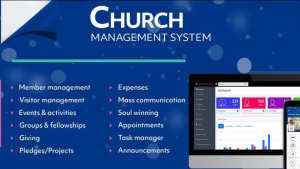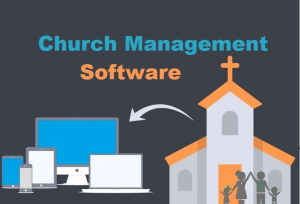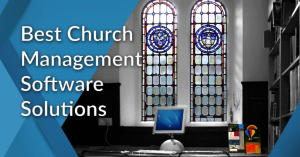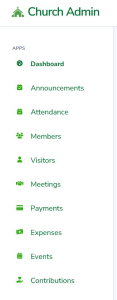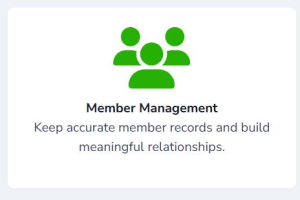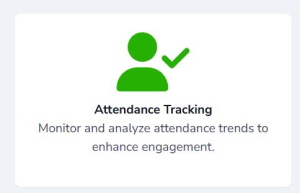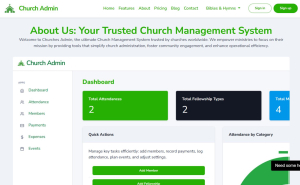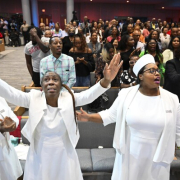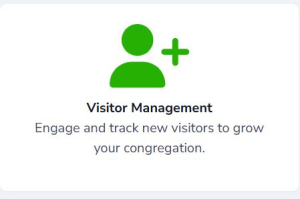How a Church Management System Enhances Spiritual Growth
In today’s digital age, churches are evolving to meet the needs of their congregations more effectively. While spiritual growth remains the cornerstone of faith communities, administrative efficiency plays a crucial role in nurturing and sustaining it. One of the most transformative tools for modern churches is a Church Management System (ChMS)—a software solution designed to streamline church operations, enhance communication, and foster deeper spiritual connections.
A well-implemented Church Management System not only simplifies administrative tasks but also creates an environment where members can engage in worship, discipleship, and community-building without logistical distractions. This blog explores how a ChMS enhances spiritual growth by optimizing church operations, improving communication, strengthening pastoral care, and encouraging active participation in faith-based activities.

How a Church Management System Enhances Spiritual Growth
Understanding Spiritual Growth in the Church Context
What Is Spiritual Growth?
Spiritual growth refers to an individual’s journey in deepening their faith, understanding biblical teachings, and developing a closer relationship with God. It involves:
- Consistent engagement in prayer and worship
- Studying scripture and theological teachings
- Active participation in church ministries and outreach
- Fostering meaningful relationships within the church community
While spiritual growth is a personal journey, churches play a vital role in providing the right environment for members to flourish in their faith.
The Role of Church Infrastructure in Spiritual Growth
A well-organized church provides:
- Structured learning opportunities (Bible study groups, theological seminars, discipleship programs)
- Effective pastoral care and mentorship
- Community engagement initiatives (missions, charity work, group activities)
- Seamless communication to keep members informed and involved
A Church Management System acts as the backbone of these initiatives, ensuring that church leaders, administrators, and members can focus more on spiritual enrichment rather than getting caught up in logistical hurdles.
How a Church Management System Enhances Spiritual Growth
1. Streamlining Church Administration for a Focused Ministry
Administrative burdens can often distract pastors and church leaders from their core mission—shepherding and guiding the congregation in their spiritual journey. A Church Management System automates essential tasks such as:
- Membership tracking
- Attendance management
- Event planning and scheduling
- Donation and tithing management
- Volunteer coordination
By reducing time spent on manual tasks, church leaders can dedicate more energy to teaching, counseling, and fostering discipleship, ultimately strengthening the spiritual foundation of the church community.
2. Enhancing Communication and Community Engagement
Effective communication is key to maintaining an engaged and spiritually active congregation. A ChMS provides multiple communication channels, including:
- Emails and Newsletters: Keep members informed about upcoming sermons, events, and study sessions.
- SMS and Mobile App Notifications: Send reminders and inspirational messages to encourage spiritual discipline.
- Online Forums and Groups: Foster meaningful discussions and provide a space for members to seek guidance and encouragement.
These features ensure that members remain connected, supported, and actively involved in church activities that contribute to their spiritual growth.
3. Strengthening Discipleship and Educational Programs
A Church Management System enhances spiritual education by:
- Organizing Bible Study Groups: Assign members to small groups based on availability and interests.
- Providing Access to Sermons and Devotionals: Store and distribute sermon recordings, devotionals, and study materials online.
- Tracking Member Progress: Monitor participation in discipleship programs and offer personalized recommendations for growth.
With structured discipleship initiatives, churches can cultivate an environment where members continuously learn and deepen their faith.
4. Encouraging Generosity Through Digital Giving
Financial stewardship is an essential aspect of spiritual growth, as giving reflects trust in God’s provision and a commitment to supporting the church’s mission. A Church Management System facilitates:
- Online Tithing and Donations: Secure and convenient digital giving options.
- Automated Giving Reports: Transparency in how contributions support church activities and outreach programs.
- Donor Engagement Features: Personalized thank-you messages and impact reports to inspire continued generosity.
When giving is made simple and accessible, church members are more likely to practice faithful stewardship, reinforcing their spiritual commitment.
5. Providing Personalized Pastoral Care
Spiritual growth is nurtured through guidance, mentorship, and pastoral support. A Church Management System helps pastors:
- Keep detailed records of member interactions and prayer requests
- Schedule one-on-one counseling and mentoring sessions
- Send personalized messages to encourage and uplift members
With a ChMS, pastoral care becomes more intentional and effective, ensuring that no member feels overlooked or disconnected from their church family.
6. Facilitating Volunteerism and Ministry Participation
Serving in ministry and church activities fosters spiritual maturity. A Church Management System enables churches to:
- Recruit and assign volunteers to different ministries
- Schedule and coordinate service opportunities
- Recognize and appreciate volunteers for their contributions
Active participation in church ministries helps individuals apply their faith in real-world service, deepening their spiritual journey while strengthening the church community as a whole.
7. Creating an Inclusive and Welcoming Church Culture
A church that prioritizes inclusivity and member engagement nurtures stronger faith connections. A Church Management System promotes inclusivity by:
- Personalizing member experiences (welcome messages, event invitations, birthday reminders)
- Offering language translation features for diverse congregations
- Ensuring accessibility through hybrid services (in-person and online streaming options)
When members feel valued and included, they are more likely to stay engaged and committed to their spiritual growth.
Choosing the Right Church Management System
Not all Church Management Systems are created equal. When selecting a ChMS, consider the following features:
- User-Friendly Interface: Easy navigation for both church staff and members.
- Customization Options: Tailor features to meet your church’s specific needs.
- Cloud-Based Accessibility: Access data and tools from anywhere.
- Integration Capabilities: Seamlessly connect with existing church tools (email services, social media, accounting software).
- Security and Data Protection: Safeguard sensitive member information.
By choosing a ChMS that aligns with your church’s mission and goals, you ensure a seamless experience that enhances spiritual growth while optimizing operations.
Conclusion: Embracing Technology for a Stronger Faith Community
Incorporating a Church Management System is not about replacing traditional worship with technology—it’s about enhancing the church experience to create a more connected, engaged, and spiritually fulfilled congregation. By streamlining administration, improving communication, and fostering deeper member involvement, a ChMS empowers churches to focus on what truly matters: spiritual growth and community transformation.
If your church is ready to embrace a technology-driven approach to faith management, explore the possibilities with a robust Church Management System like ChurchesAdmin.com.
Take the next step toward a thriving, spiritually enriched church community today!





